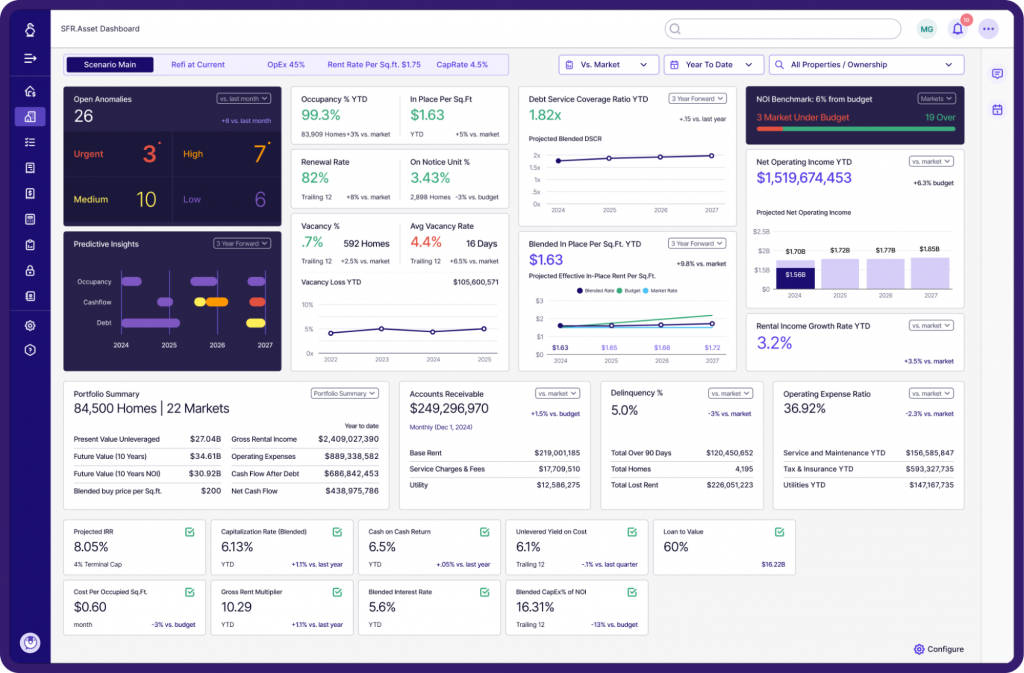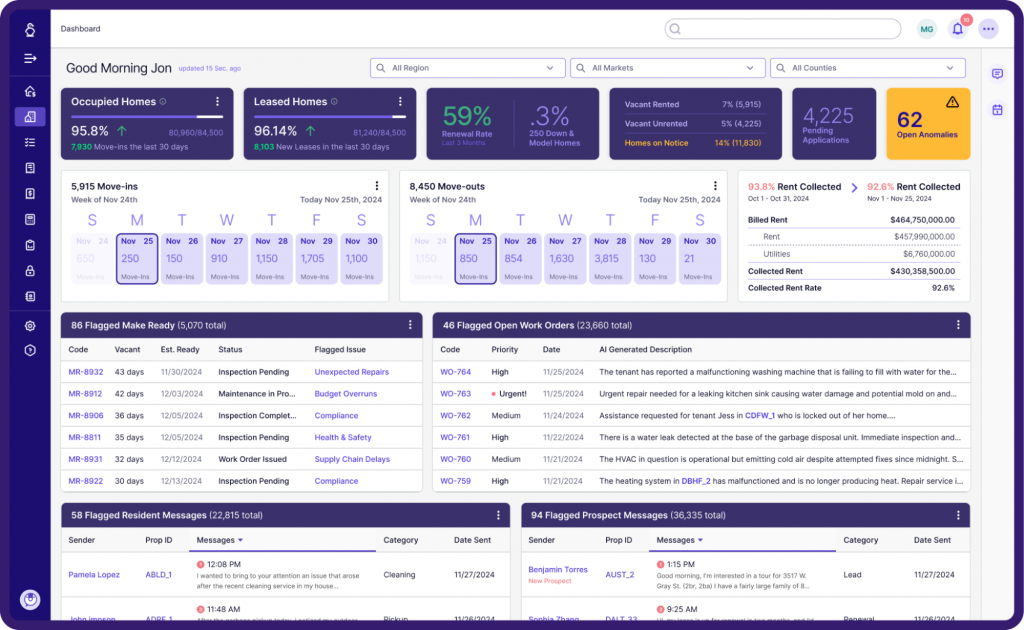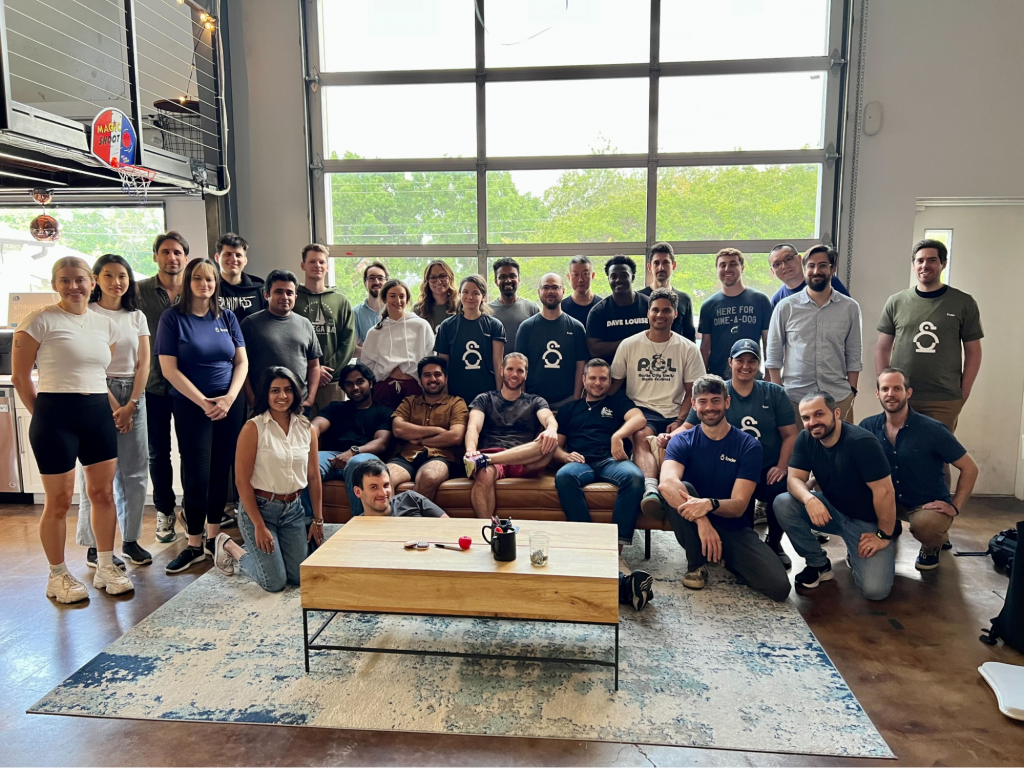Not all innovation stems from market demand.
‘’Tesla, SpaceX, and Palantir were unnatural. They went against the grain. Electric cars weren’t and wouldn’t have been a thing. Innovation in space travel wasn’t and had no reason to be a thing. ‘’ —Jonathan Lonsdale, Unnatural Progress
Ender, a real estate tech start-up, is one such entity.
Before founding Ender, Jonathan Lonsdale spent years in venture capital, advising and investing in entrepreneurs. He often described his investor career as a “cheerleader on the sidelines,” supporting innovation but not leading it.
That changed unexpectedly.
One evening, as he prepared for hosting an event at his loft, a broken air conditioner flooded his New York City apartment. In his attempt to reach property management, he encountered operations that were fragmented, outdated, and highly inefficient.
The ensuing repairs and maintenance took months. He discovered the problem itself was preventable with maintenance. Standing in his water-damaged living room, Lonsdale realized: “Why is it so hard to solve such a basic problem even on the high-end? Shouldn’t we have an automated system that works seamlessly for everyone?”
That’s where Ender started.
Rebuilding Real Estate Management from the Ground Up
Ender is not addressing a single pain point; it is tackling the systemic inefficiencies that have long plagued the real estate management industry.
Unlike most startups, Ender did not pursue a rapid minimum viable product (MVP) launch.
“Our MVP,” Lonsdale says, “was building a full-scale, enterprise-grade ERP system from scratch.”
While that ambition might sound improbable, it was intentional. Lonsdale spent more than five years leading a team to reengineer the real estate management stack—designing a modern, fully integrated platform aimed specifically at U.S. institutional investors in the single-family rental (SFR) market.
Ender’s platform connects the full operational lifecycle: property appraisal, investment review, renovation and inspections, applications and leasing, move-in / move-out, rent collection, renewals, arrears management, work orders, task management, communication, accounting, and financial reporting—all within a single system.

Rather than serving as a point solution, Ender positions itself as a foundational operating system for institutional landlords, seeking to become the core infrastructure powering large-scale property portfolios.
Technically categorized as a Property Management System (PMS), Ender’s architecture departs sharply from legacy models—rebuilding the category around modern data structures and true process integration.
PMS: A Broken Core Hidden in Plain Sight
At the heart of real estate management lies the Property Management System (PMS)—the platform intended to handle everything from leasing workflows to rent collection, maintenance dispatch, accounting, and financial reporting.
In theory, PMS should be the industry’s most trusted operational backbone. In practice, it is often its greatest liability.
Through deep industry research, Lonsdale identified the root cause: poor data quality.
When daily operations, reporting, and analytics are built on fragmented or inaccurate data, inefficiencies compound—wasting resources and undermining decision-making at scale.
Adding to the problem, traditional PMS solutions tend to address issues in isolation.
Legacy PMSs evolved by stacking specialized modules—leasing, payments, work orders, accounting—on top of one another, often developed by different teams or acquired through M&A. The result is a “Frankenstein” architecture: systems that appear integrated on the surface but remain deeply fragmented underneath.
Ender’s strategy is to eliminate these structural flaws at the root level—offering a truly unified system where data integrity and operational workflows are seamlessly connected from end to end.

Small Landlords vs Institutional Operators: The Two Worlds of PMS
These problems didn’t just happen today, and Ender is certainly not the first team to try to disrupt the PMS space. Looking at the market, current PMS service providers can be broadly categorized into two groups:
The first group serves small and mid-sized landlords—often referred to as “mom-and-pop” owners—through platforms like AppFolio and RentRedi. These property managers typically service between one and hundreds of units, handling tenant sourcing, rent collection, and maintenance directly.
The second group focuses on institutional landlords: corporate owners such as real estate investment trusts (REITs), private equity firms, insurance companies, and large asset managers. Managing portfolios that have thousands of properties, these operators rely on dedicated property management teams—and increasingly, they are expanding into the fast-growing asset class of Single-Family Rentals (SFR).
Traditionally, single-family homes—standalone houses—were owned and managed by individuals or families. However, following the 2008 financial crisis, institutional investors began entering the market at scale.
According to Nine Four Ventures, as of 2022, approximately 700,000 SFR units in the U.S. were institutionally owned—a figure projected to rise to 7 million by 2030.
The Gap Legacy Providers Can’t Bridge
Institutional ownership has brought a new level of operational complexity to the sector. Managing geographically dispersed assets at scale demands systems with full functionality, deep integration, and flexibility—requirements that traditional PMS platforms, initially built for simpler portfolios, struggle to meet.
Institutional-focused PMS providers—such as Yardi, RealPage, MRI Software, and Entrata—are established names in the space. However, most were founded in the 1980s or early 2000s, and their legacy architectures remain deeply entrenched. Modernizing these platforms would require costly, near-impossible rewrites of core systems—an undertaking few incumbents are willing to pursue.
As a result, no player has fully committed to Ender’s approach: Building a new system from the ground up, designed specifically for institutional SFR operations, with truly integrated workflows and scalable infrastructure—serving a high-growth segment that remains significantly underserved.
Building from Scratch to Solve the Industry’s Deepest Pain Points
“The biggest pain points—and the greatest opportunities for innovation—are on the institutional side,” says Lonsdale.
While Ender did not initially target institutional landlords, the team quickly pivoted after early product launches attracted significant inbound interest from institutional groups. This shift was a natural extension of the team’s DNA: Ender’s core members hail from major U.S. technology companies, bringing expertise in building highly stable, scalable systems with a focus on automation and data integration—foundations critical to developing an enterprise-grade ERP.
In its early days, the team even took on property management duties themselves to experience operational pain points firsthand. Managing small and mid-sized portfolios briefly, they soon realized that their real strength lays in addressing the complex, highly customized demands of institutional owners.
That technical depth has translated into measurable impact.
Clients report that by adopting Ender’s rent arrears management module, labor demands for collections have dropped by as much as 80%, freeing operational teams to redeploy resources toward strategic initiatives.
These gains are not the result of isolated feature improvements, but of Ender’s deeply integrated system architecture—designed to streamline processes end-to-end.
This depth of product and systems thinking has drawn the attention of many investors to its potential. Venture capitalists such as Global Founders Capital, Tuesday Capital, LeFrak, HOF Capital, Circle Ventures, and Cherubic Ventures have invested early on to support the company’s efforts to drive innovation from the architectural level in a market that is massive yet digitally underserved.
Ender’s Next Frontier: AI-Powered Automation
With a modern ERP foundation and clean operational data, Ender is now positioned to lead the next wave of disruption in real estate: AI-driven workflow automation.
Unlike legacy platforms retrofitting AI onto outdated systems, Ender’s architecture allows for seamless integration of intelligent agents. In traditional billing, for example, invoices pass through OCR translation, manual classification, and human review.
Ender’s AI systems can automate classification midstream, leaving only the final approval to human teams—dramatically accelerating processing speed.
In leasing operations, AI tools can pre-screen applicants against predefined criteria, freeing staff from repetitive, rules-based tasks and enabling them to focus on high-value decisions.
In 2025, Ender plans to roll out a suite of AI-powered automation tools focused on arrears management, financial reporting, and other high-friction operational processes—efforts that Lonsdale believes could meaningfully transform not just property management operations, but the broader real estate industry itself.
A Flood Sparks the Restructuring of an Entire Industry
Lonsdale believes the property management industry is on the cusp of a profound AI-driven transformation over the next five to ten years—one that will fundamentally rewrite labor-intensive workflows.
He envisions a future where, if something breaks in a home, there will be no need for tenants to file reports or make calls. An AI agent will autonomously detect anomalies, engage vendors, verify insurance coverage, schedule repairs, and eventually dispatch robots to execute on-site fixes. Every step will be recorded, audited, and optimized—without requiring human intervention.
“The operational workflows of the future won’t need the manpower they do today,” Lonsdale says.
“You’ll likely need only one-fifth, or even one-tenth, of the current workforce. Operations will be more efficient, more compliant, less error-prone—and deliver a far better experience.”
From a minor apartment flood to a sweeping industry vision, Ender isn’t just building a product. It is attempting to redefine what property management should look like in the era of intelligent automation.

This article has been contributed to Asia Tech Daily.

